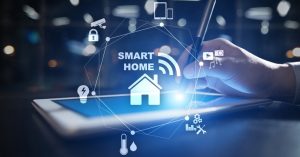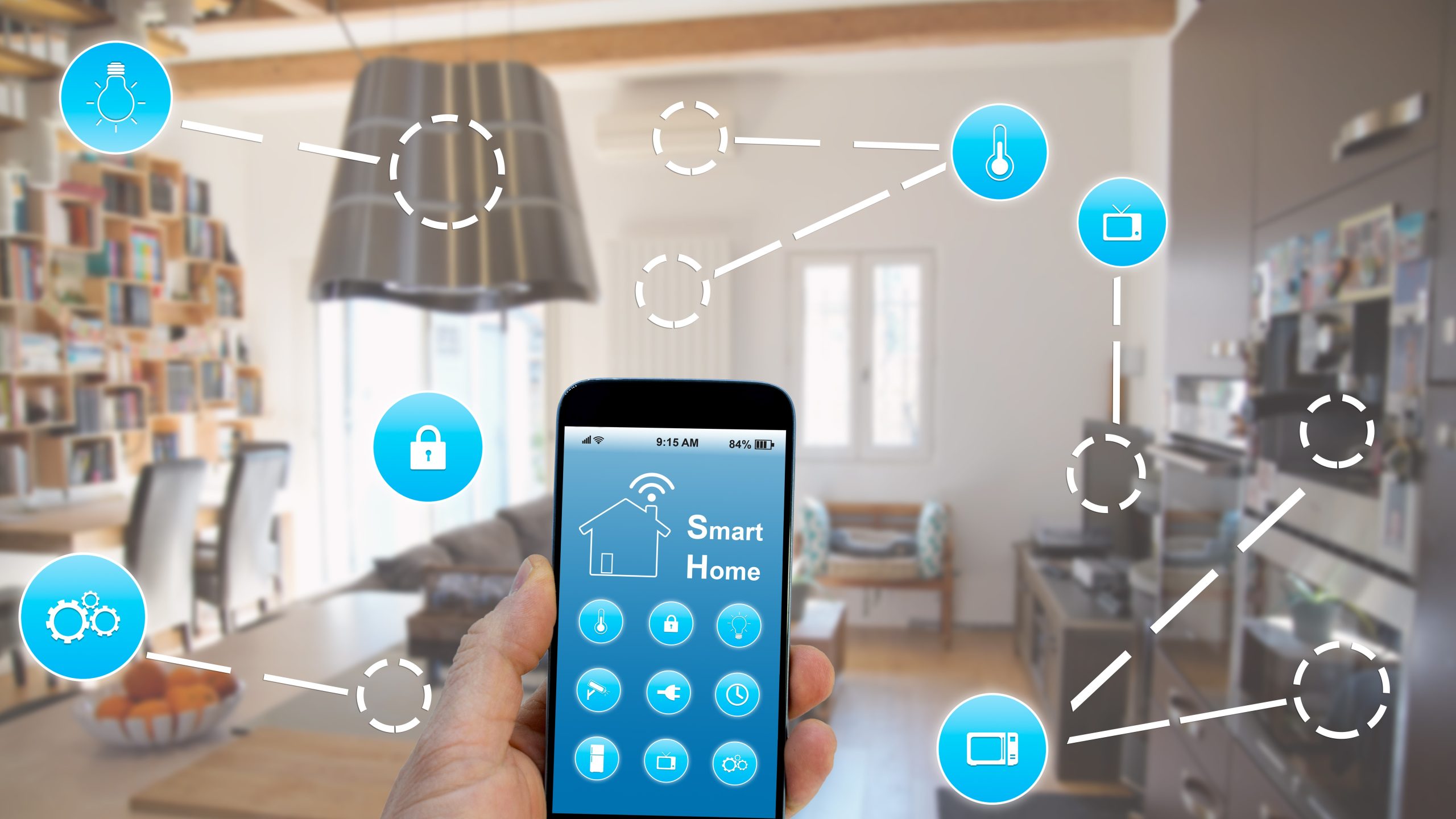
Smart Home Devices Spying on you
The seamless inclusion of smart home devices mirrors contemporary lifestyles, providing unparalleled convenience, efficiency, and connectivity. Yet, a recent study unveils unsettling realities: these devices might intrude on our privacy, acting as covert spies within our sanctuaries. While welcoming such technology into our homes is commonplace, it’s imperative to acknowledge and address the potential privacy breaches they pose. Our discussion will illuminate the looming surveillance threats posed by smart home devices alongside strategies to fortify your privacy amidst a landscape of burgeoning interconnectivity.
The Silent Observers in Our Homes
Smart home devices encompass a wide variety of technologies, from voice-activated assistants like Amazon Alexa and Google Assistant to connected cameras and thermostats.
They’ve seamlessly integrated themselves into our daily routines, offering promises of enhanced efficiency and convenience. However, a recent investigation conducted by a consumer advocate group has brought forth concerning inquiries about the extent to which these devices might be invading our privacy.
This study scrutinized the data practices of leading smart home manufacturers such as Google and Amazon, uncovering a complex landscape where the boundaries between user convenience and potential surveillance become increasingly ambiguous.
Key Findings from the Study
The study scrutinized several popular smart home devices, such as smart TVs, doorbell cameras, and thermostats. It uncovered several alarming revelations.
Widespread Data Sharing that invites spy
In the realm of smart home technology, there exists a notable trend where a substantial portion of these devices engage in the sharing of user data with third-party entities. This exchange of data occurs frequently without the explicit knowledge or consent of the users. This phenomenon has sparked significant concerns regarding the transparency and ethics surrounding the practices of companies involved in the smart home industry.
Users are left questioning the extent to which their data is being shared and for what purposes, it is being utilized by these third-party entities. The lack of clear consent mechanisms and transparency exacerbates these concerns, as users are often unaware of the full scope of data sharing occurring through their smart home devices.
These raise broader questions about privacy rights, data protection regulations, and the ethical responsibilities of companies in the ever-expanding landscape of smart home technology.
Potential for Eavesdropping
In today’s technological landscape, voice-activated devices such as Amazon’s Alexa have proliferated, becoming a ubiquitous presence in many households. These smart speakers and virtual assistants, while offering unparalleled convenience and efficiency, have raised concerns regarding their susceptibility to potential eavesdropping.
A recent study has shed light on some alarming findings: instances where these devices inadvertently recorded and transmitted audio data without user consent or awareness. This revelation unveils significant privacy risks, particularly for individuals who may unwittingly find themselves subjected to continuous auditory surveillance within the supposed sanctity of their homes.
Lack of Transparency
The study brings attention to a troubling revelation: the opacity surrounding data practices in the realm of smart home devices. Often, critical details regarding data collection, storage, and sharing are buried in lengthy, convoluted terms of service agreements.
Consequently, manufacturers frequently fall short of delivering clear and comprehensive information to consumers. This lack of transparency leaves users unaware of the potential privacy risks inherent in adopting connected home technologies. Ignorance, in this context, could prove detrimental to individuals’ privacy and security.
Navigating the Smart Home Landscape Safely
Here are the key steps to navigate the smart home landscape safely.
1. Research Device Privacy Policies
Before investing in a smart home device, it’s crucial to meticulously scrutinize the manufacturer’s privacy policy. Pay close attention to the level of transparency they provide regarding various aspects such as data collection practices, sharing protocols, and the security measures implemented to safeguard user information.
By thoroughly examining these details, you can make an informed decision about whether the device aligns with your privacy preferences and concerns. This proactive approach empowers consumers to choose products that prioritize their privacy and security needs, fostering a safer and more trustworthy smart home ecosystem.
2. Optimize Privacy Settings
When using smart home devices, take advantage of the privacy settings they provide. These settings often allow users to personalize their privacy preferences.
For instance, you can disable data-sharing features that you’re uncomfortable with, or adjust the sensitivity of voice-activated functions to better suit your needs. By customizing these settings, you can enhance your control over the data collected by your smart home devices and better protect your privacy.
3. Regularly Update Firmware
It’s crucial to keep your smart home devices up-to-date with the latest firmware updates. Manufacturers frequently release these updates to address security vulnerabilities and improve device performance. By installing these updates regularly, you can strengthen the security of your devices and protect them against potential cyber threats.
Firmware updates are a proactive measure to ensure that your smart home ecosystem remains resilient and reliable in the face of evolving security challenges. Therefore, make it a habit to check for and install firmware updates promptly to maintain the integrity and security of your smart home network.
4. Use Strong Passwords
To ensure the security of your smart home devices, it’s crucial to implement robust security measures. Start by setting up strong, unique passwords for each device. Avoid using default passwords, as they’re commonly known and easily exploited by hackers. Instead, create complex passwords that include a combination of letters, numbers, and special characters.
Additionally, strengthen your home network security by using encryption protocols such as WPA2 or WPA3. Regularly update your router’s firmware and enable features like firewall protection to safeguard against unauthorized access. Consider using a separate network for your smart devices to isolate them from your main network, reducing the risk of a security breach spreading to other devices.
By taking these proactive steps, you can significantly enhance the security of your smart home ecosystem and protect your personal information from potential threats.
5. Consider Offline Alternatives
In the quest for smart home functionalities, it’s prudent to explore offline alternatives. Conduct research to determine if your desired functionalities can be achieved without relying on constant internet connectivity.
Opting for devices that operate offline or have limited connectivity can mitigate the risk of data exposure. By minimizing the transmission of data over networks, you can enhance the security and privacy of your smart home ecosystem. This approach also offers greater control over your data and reduces dependency on internet infrastructure, which may be prone to outages or vulnerabilities.
Additionally, offline-capable devices can provide peace of mind by ensuring that sensitive information stays within the confines of your home network, rather than being transmitted to remote servers where it may be susceptible to breaches or unauthorized access. Therefore, when selecting smart home devices, consider prioritizing those that offer offline functionality to bolster your privacy and security measures.
6. Limit Voice-Activated Features
When prioritizing privacy within your smart home ecosystem, it’s prudent to deliberate on the use of voice-activated functionalities. By limiting or entirely disabling such features, you mitigate the risk of unintentional audio captures and the potential for unauthorized eavesdropping.
This precautionary measure ensures a higher level of control over the dissemination of personal information and helps safeguard against privacy breaches within your home environment.
7. Regularly Audit Connected Devices
Regularly assess the array of smart home devices linked to your network. You might be astonished by their abundance. Eliminate any inactive devices or those lacking robust security features.
Maintaining a streamlined and secure smart home environment is crucial for minimizing potential risks to your privacy and security. By periodically reviewing and managing your smart home ecosystem, you can ensure that only necessary and adequately protected devices remain connected, reducing the likelihood of unauthorized access or data breaches.
Do not Leave Your Smart Home Unprotected – Schedule a Security Review
The connected era invites us to embrace technological advancements. But we need to do it responsibly. You don’t want the convenience of smart home devices to compromise your data privacy.
Just how secure is your smart home and Wi-Fi network? Need to find out?
Need help exploring securing your devices? Get in Touch with Us and See how we can help you.






